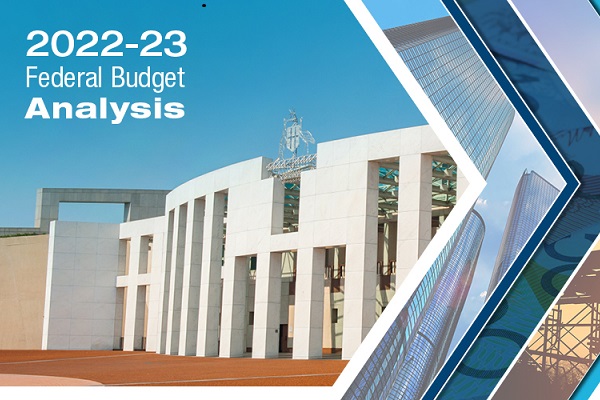Investors had plenty to smile about in 2017, despite a world of worries on the geopolitical stage from the Middle East to North Korea and the South China Sea. The global economy continued its steady improvement and financial markets produced some excellent returns.

The year began with the inauguration of President Donald Trump, whose populist policies on issues such as trade and energy have impacted the global economic agenda. As the year closed the Trump administration’s corporate tax cuts were approved by Congress, which should boost US economic activity.
The US Federal Reserve lifted its benchmark interest rate three times in 2017, with more expected this year as the economy strengthens.
Positive economic growth
The global economy grew steadily throughout 2017 with the US and other G7 leading industrial nations growing at around 2.2 per cent. China’s growth has slowed, but at 6.8 per cent it’s still a global powerhouse and a major customer for Australia’s natural resources, education and other goods and services.i
Australia’s economy grew by 2.8 per cent in the year to September, marking 26 years without a recession. The biggest contributor was private sector investment as business profits posted their strongest gains in 15 years.
Unemployment fell to 5.4 per cent, but sluggish wage growth remains an issue for the Reserve Bank.ii A jump in consumer confidence to 103.3 on the Westpac Melbourne Institute scale – anything above 100 is viewed as optimism – was good news for retailers leading into Christmas.iii
| Australian Key Indices as at 31 December 2017 |
Share Markets (% change) Jan – Dec 2017 |
||
| GDP annual growth rate* | 2.8% | Australia ASX 200 | +7.0 |
| RBA cash rate | 1.5% | US S&P 500 | +19.4 |
| Inflation | 1.8% | UK FTSE 100 | +7.6 |
| Unemployment | 5.4% | China Shanghai Composite | +6.6 |
| Consumer confidence index | 103.3 | Japan Nikkei 225 | +19.0 |
*Year to September 30, 2017 Sources: RBA, Westpac Melbourne Institute, Trading Economics
Mixed signals on financial markets
The Australian dollar finished the year at US78c, up 8.6 per cent, due mostly to strong commodity prices. The cash rate held steady at 1.5 per cent all year while interest rates on government 10-year bonds fell from 2.77 per cent to 2.64 per cent.iv The consensus is that the next interest rate move will be up although perhaps not until later this year.
Commodities were a mixed bag. Global oil prices rose 12.5 per cent to US$60 a barrel as OPEC members agreed to extend production restrictions. Iron ore fell 3.3 per cent on lower demand from China, while coal rose 5.7 per cent.v
The shooting star award of 2017 goes to Bitcoin. The value of one Bitcoin soared from around $1300 in January to a high of over $22,000 before dropping to around $17,000 at year’s end.
Shares surprise on the upside
Global shares powered ahead, fuelled by economic growth, strong corporate profits and low interest rates.
US shares rose to record highs, up 19 per cent partly in response to the weak US dollar. The low dollar and Brexit uncertainty were a drag on the UK market, but it still managed a 7 per cent lift. Eurozone leaders Germany and France posted gains of 12 per cent and 9 per cent respectively. Asian and emerging market shares were also among the top performers, with the Japanese market up 19 per cent.vi
Property cools
Australian home prices rose 4.2 per cent last year compared with 5.8 per cent in 2016, dragged down by the cooling Sydney market which was up just 3.1 per cent. Hobart (up 12.3 per cent) and Melbourne (up 8.9 per cent) were the strongest capital city markets, followed by Canberra (4.9 per cent), Adelaide (3.0 per cent) and Brisbane (2.4 per cent). Darwin fell 6.5 per cent and Perth was down 2.3 per cent.vii
Most observers predict subdued growth rather than a market bust in the year ahead.
Looking ahead
There is every reason for cautious optimism in the year ahead, although there are risks too. Continuing investigations into Donald Trump could destabilise his leadership and global markets, while closer to home the Reserve Bank is keeping a watchful eye on wages, inflation, the Aussie dollar and property prices.
Even so, local economic growth is on track, interest rates are likely to remain low for some time yet and first home buyers have their best chance in years to get a toehold in the market. Australian shares look fair value although global equities are likely to continue to provide higher returns.
i Trading economics, https://tradingeconomics.com/country-list/gdp-annual-growth-rate?continent=america
ii Reserve Bank of Australia, http://www.rba.gov.au/snapshots/economy-indicators-snapshot/
iii Westpac Melbourne Institute Consumer Confidence, 13 December 2017, https://www.westpac.com.au/content/dam/public/wbc/documents/pdf/aw/economics-research/er20171213BullConsumerSentiment.pdf
iv RBA, rba.gov.au
v Trading economics, https://tradingeconomics.com/commodities
vi Trading economics, https://tradingeconomics.com/stocks
vii CoreLogic, 2 January 2018, https://www.corelogic.com.au/news/national-dwelling-values-fall-03-december-setting-scene-softer-housing-conditions-2018#.WlKzW1WWZhE
Did you enjoy this article?
Click below to share it
More News Articles
Subscribe to Our Mailing List & Connect Through our Socials
While you may have come to us from a variety of sources, the time has never been better to join us.
Subscribe to our mailing list and connect through out socials to keep up to date with our latest news and get some tips.










